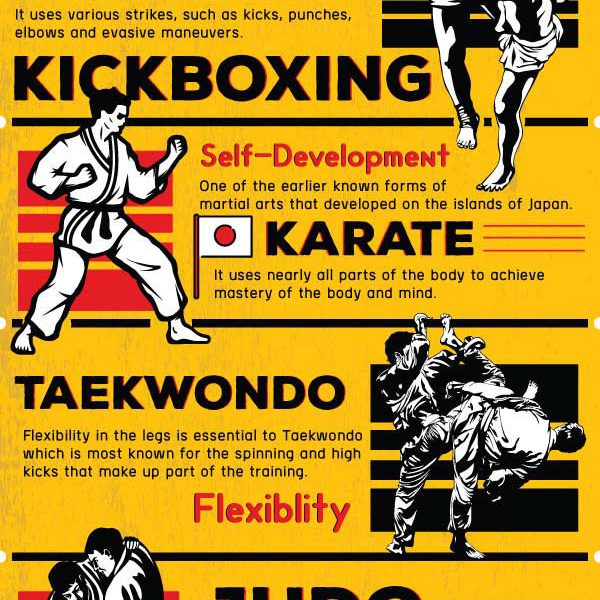Introducing The Selection Of Martial Arts Disciplines: A Guide From Karate To Taekwondo
Introducing The Selection Of Martial Arts Disciplines: A Guide From Karate To Taekwondo
Blog Article
Authored By- why shouldn't you bully
Are you tired of feeling overwhelmed by the huge globe of fighting styles? With a lot of styles to pick from, it can be very easy to obtain lost in a sea of strikes, kicks, and strange names. Yet what is best martial art for street fighting not!
This conversation will debunk the various martial arts designs, taking you on a journey from the effective strikes of Karate to the dynamic kicks of Taekwondo. Get ready to uncover the beginnings, methods, and viewpoints behind these old art types.
So, tighten your belt and prepare to start an enlightening exploration into the fascinating world of fighting styles.
Beginnings of Martial Arts Styles
The origins of martial arts designs can be traced back to ancient worlds and their need for self-defense and combat methods. Throughout background, different cultures created their very own unique techniques of battling, each with its own set of strategies and philosophies.
In China, as an example, martial arts styles such as Kung Fu and Tai Chi were established as a means of protection and boosting physical and mental health.
In Japan, the samurai warriors produced styles like Martial arts and Judo, concentrating on technique, accuracy, and proficiency of the body.
In a similar way, in Korea, Taekwondo emerged as a fighting style emphasizing high kicks, fast motions, and mental stamina.
These early worlds laid the structure for the diverse selection of martial arts designs that exist today, each with its own rich background and cultural importance.
Techniques and Educating Methods
To grasp fighting styles designs, practitioners should find out different techniques and training methods.
Methods are the specific activities and activities utilized in fight, such as punches, kicks, tosses, and blocks. Different martial arts designs have their very own one-of-a-kind collection of methods that specialists need to grasp through strenuous training.
Training techniques differ relying on the style, however they generally include a combination of physical conditioning, drills, sparring, and forms.
Physical fitness is critical to construct strength, versatility, and endurance. Drills assist specialists refine their techniques and enhance their rate and accuracy.
Competing enables professionals to exercise their strategies in a managed, sensible environment. Forms, also called kata, are ironclad sequences of movements that assist experts create muscle memory and emphasis.
Viewpoints and Concepts
Discovering the philosophies and principles of fighting styles styles can offer you with a deeper understanding of your selected technique. Each fighting style has its own special viewpoint and set of guiding principles that form the way it's exercised.
For instance, Karate stresses technique, respect, and self-control. It shows practitioners to focus their body and minds, allowing them to protect themselves while preserving a feeling of inner peace.
On the other hand, Taekwondo places a solid focus on speed, agility, and adaptability. Its principles are rooted in the tenets of courtesy, honesty, determination, self-constraint, and resolute spirit.
Conclusion
Now that you have actually explored the beginnings, strategies, and approaches of various martial arts styles, you have a much deeper understanding of these ancient techniques.
Picture a young karate student, practicing with steadfast resolution and focus, breaking through boards with an effective punch.
Their journey showcases the commitment and stamina called for to grasp a fighting style, reminding us that with self-control and willpower, anything is feasible.
